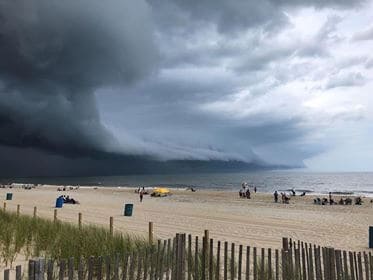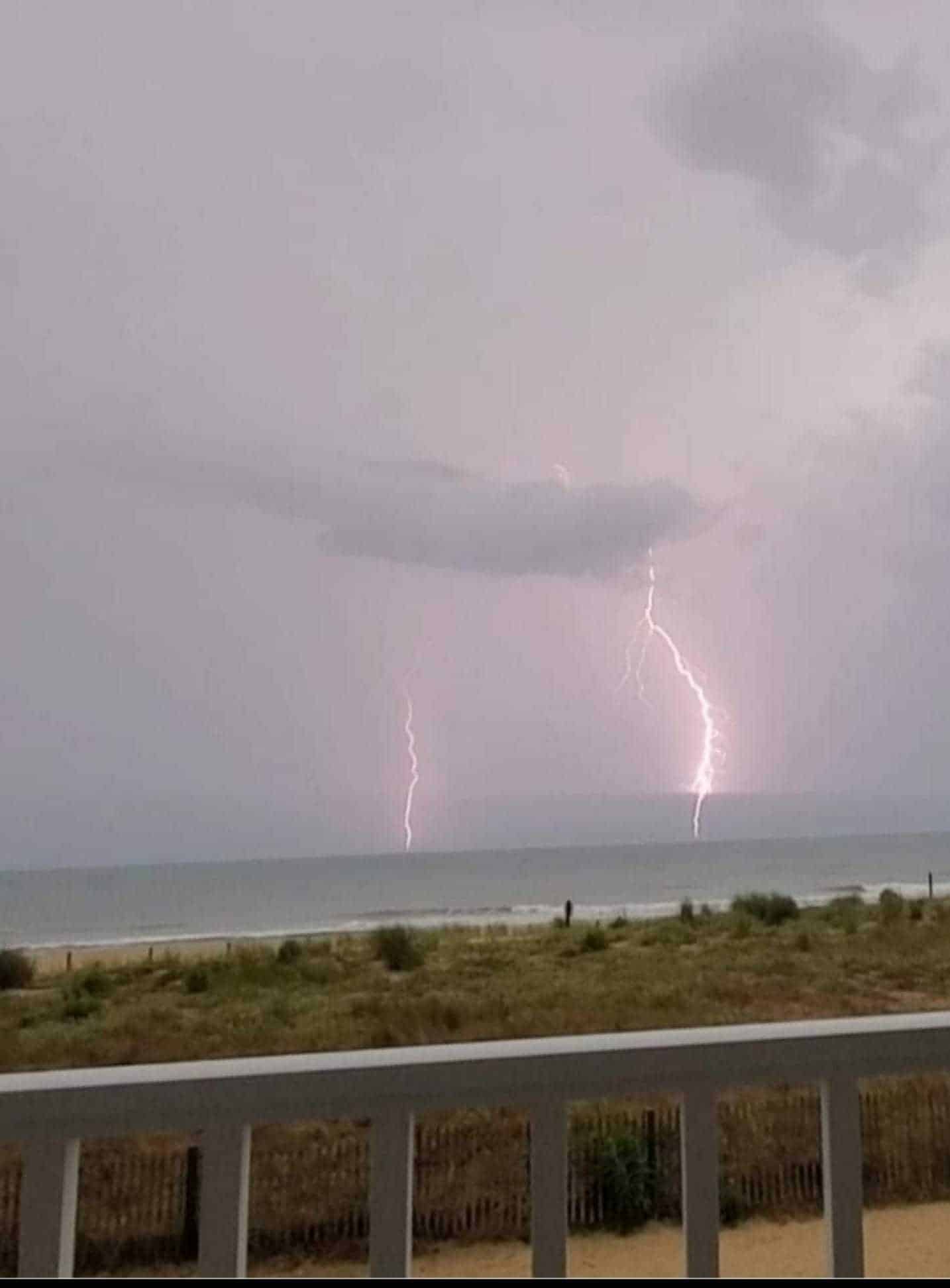
According to the CDC website, about 40 million lightning strikes hit the ground in the United States each year. But the odds of being struck by lightning in a given year are less than one in a million, and almost 90% of all lightning strike victims survive. The odds of being struck multiple times is even less, with the record being seven times in one lifetime. There are some factors that can put you at greater risk for being struck, such as participating in outdoor recreational activities or working outside. Regional and seasonal differences can also affect your risk of being struck by lightning.
Lightning strikes kill about 30 people a year in the United States. From 2006 through 2021, leisure activities such as fishing, boating, playing sports, and relaxing at the beach accounted for almost two-thirds of lightning deaths. Just this week, lightning killed 2 and critically injured 2 others who had decided to shelter under a grove of trees in Lafayette Park near the White House.
What can look like a clear and sunny evening can turn stormy quickly on these hot summer days. The heat creates conditions ripe for building thunderheads replete with thunder and lightning. Here are some tips to stay safe on the beach:

Listen to the Beach Patrol
Ocean City employs trained life guards on the beaches in Ocean City from Memorial Day to Labor Day. These guards are trained to get you off the beach when conditions deteriorate and they will also let you know when you can return to your pre-storm activities. Please follow their instructions.

Watch the Weather Forecast
Don’t ignore warnings from the local or national weather sources. We all think that if it looks clear, it will stay that way. This isn’t true. If you see thunderheads moving towards you, keep an eye on them. Check your weather app. We like “My Radar” which shows the intensity of the approaching storm. It will also show if the storm that looks threatening initially is actually dissipating. If the storm moves closer or you hear thunder, move inside. Sometimes the storm will actually change direction. Your weather app can help you figure out what is threatening and what is not.
Take cover if you hear thunder
4 times more men than women are struck by lightning and more often on the weekends. This isn’t because men are more magnetic or highly charged. It’s likely to be because men are more likely to be outside recreating and not to go in when storms approach. Don’t be foolish. Take cover and wait to go back outside until the storm passes – which it will and usually rather quickly here at the beach.
Here are the tips for lightning safety from the National Weather Service:
- NO PLACE outside is safe when thunderstorms are in the area!!
- If you hear thunder, lightning is close enough to strike you.
- When you hear thunder, immediately move to safe shelter: a substantial building with electricity or plumbing or an enclosed, metal-topped vehicle with windows up.
- Stay in safe shelter at least 30 minutes after you hear the last sound of thunder.

What if you Can’t Get to Your Hotel Room or Condo?
If you are at Assateague and have taken a walk up the beach when you see a thunderstorm moving quickly in your direction, go to your car and roll up the windows. Shelter there until the storm passes. Don’t stand in a wet shower or lay on the beach. Here are more tips from the National Weather Service:
Last Resort Outdoor Risk Reduction Tips
If you are caught outside with no safe shelter anywhere nearby the following actions may reduce your risk:
- Immediately get off elevated areas such as hills, mountain ridges or peaks
- Never lie flat on the ground
- Never shelter under an isolated tree
- Never use a cliff or rocky overhang for shelter
- Immediately get out and away from ponds, lakes and other bodies of water
- Stay away from objects that conduct electricity (barbed wire fences, power lines, windmills, etc.)
What if you are Caught out in a Boat?
Head for shelter as quickly as you can. Being on the water is dangerous in a thunderstorm. According to the CDC, boats with cabins provide some protection. If your boat has a metal superstructure, grounding that to the water with a metal anchor chain may help. We have read that by doing so, you may actually remove some charge from the air and lessen the likelihood of getting struck. If you are in a small open boat, get as low as possible.
Here is some more information from the CDC on lightning safety.
Lightning Also Can Injure You Indoors
According to the CDC, approximately 1/3 of all lightning injuries occur indoors. Avoid water, stay away from electrical objects – and that includes computers that are plugged in, and stay away from windows and porches. Here is the list of indoor safety tips from the CDC.
- Avoid water.
Do NOT bathe, shower, wash dishes, or have any other contact with water during a thunderstorm because lightning can travel through a building’s plumbing. The risk of lightning travelling through plumbing might be less with plastic pipes than with metal pipes. However, it is best to avoid any contact with plumbing and running water during a lightning storm to reduce your risk of being struck. - Don’t touch electronic equipment.
Do NOT use anything connected to an electrical outlet, such as computers, laptops, game systems, washers, dryers, or stoves. Lightning can travel through electrical systems, radio and television reception systems, and any metal wires or bars in concrete walls or flooring. Equip your home with whole-house surge protectors to protect your appliances. - Avoid windows, doors, porches, and concrete.
Stay away from windows and doors, and stay off porches. Do NOT lie on concrete floors or lean on concrete walls during a thunderstorm. Lightning can travel through any metal wires or bars in concrete walls or flooring. - Don’t use corded phones.
Corded phones are NOT safe to use during a thunderstorm. Do NOT use them. However, it is safe to use cordless or cellular phones during a storm.
Waterspouts are actually tornados in the Water and Can Kill
Many like to watch waterspouts and forget that they are actually tornadoes and can damage and kill. This week, a Category 1 tornado looked like a waterspout and caused serious damage on Smith Island, an island in the Chesapeake Bay west of Ocean City. Forgetting that nature is powerful is a dangerous mistake.
Be Patient
There are so many fun things to do in Ocean City while you wait for a storm to pass. Restaurants, the Life Saving Museum, the movies, the Escape Room, browsing the shops… Take the time to enjoy your alternative activity and stay safe doing it. And remember, you might even see a rainbow as the storm passes.
Enjoy the summer and the beach, but please stay safe.


